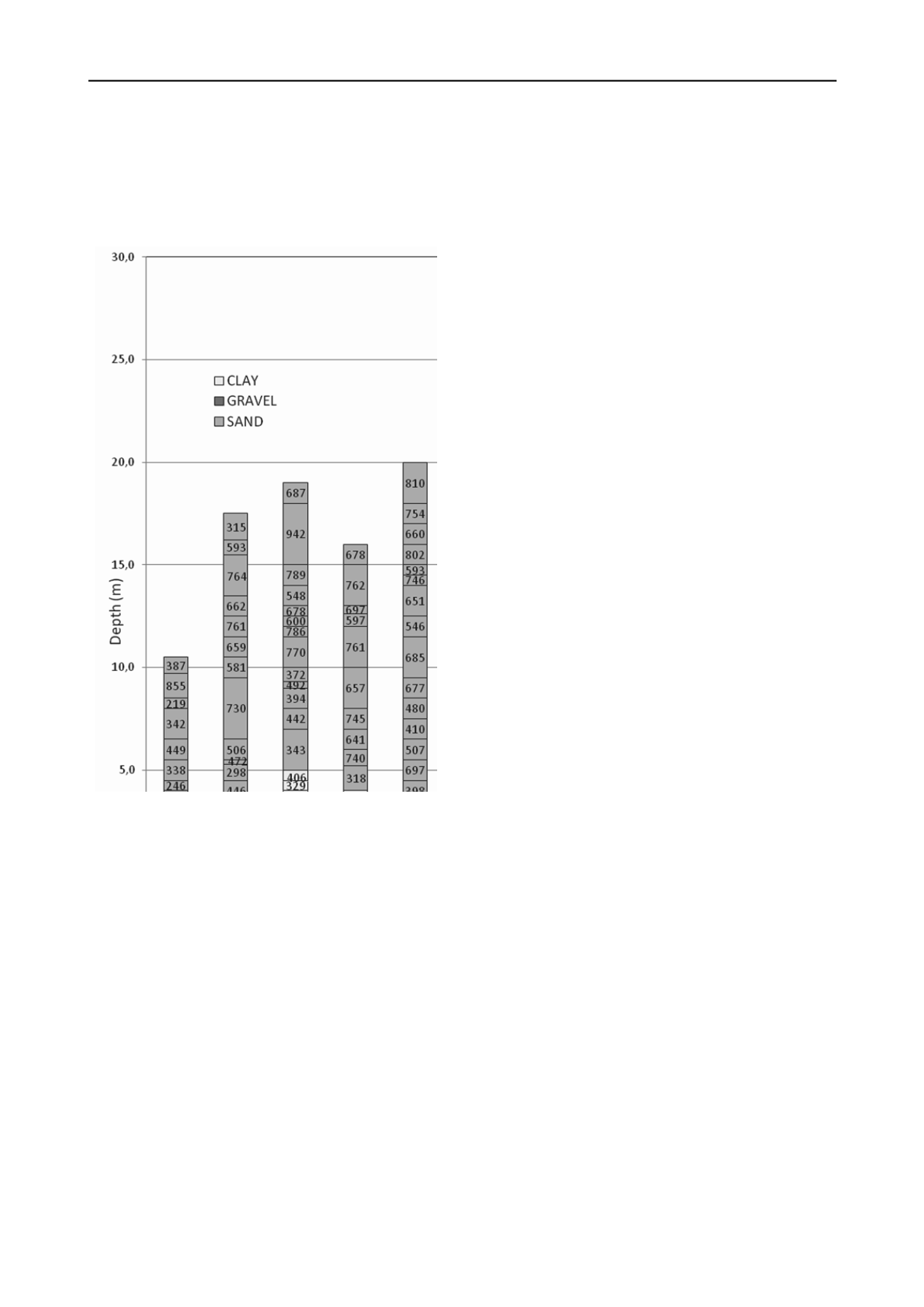
1618
Proceedings of the 18
th
International Conference on Soil Mechanics and Geotechnical Engineering, Paris 2013
category in Euro Code)- but in boreholes from group 2 except
BH3 there is not any sub-layer from this category. It is
necessary to consider that E soil type area borders were got
from refraction method and it is not an accurate method.
On the other hand errors might occur during analysis with
EERA software because limitations like linear analyzes.
As the noted above current method based on average shear
wave velocity and Euro Code limitations for shear wave
velocity ranges, thus it ignore from parameters like divided sub-
layers properties include thickness, shear wave velocity and
very soft soil sub-layers or very stiff soil layers effect on
amplification ratio. This study revealed the
deficiencies of
current earthquake codes and it emphasizes on effect of sub–
layers properties on amplification ratio.
7
REFERENCES
Sefak. E,2001.Local site effects and dynamic soil behavior, Soil
Dynamics and Earthquake Engineering (21) ,453-458 .
Zhao.J.X, Zhang.J, Irikura.J.Side effect of using response spectral
amplification ratios for soft soil sites – earthquake source-type
dependent amplification ratios. Soil Dynamics and Earthquake
Engineering (30),258-269.
Ferrari.R, Ferreti.G, Barani.S, Spallarossa.D.2010.Investigation on the
1920 Garfagnana earthquake (M
w
=6.5):Evidences of site effects in
Villa Collemandina (Tuscany, Italy).Soil Dynamics and Earthquake
Engineering (30),1417-1429.
Tezcan.S.S, Kaya, Engin Bal.I, Ozdemir.Z.2002.Seismic amplification
at Avcilar, Istanbul.Engineering Structures (24),661-667
Bouckovalas.G.D, Kouretzis.G.P.2001.Stiff soil amplification effects in
the of 7 September 1999Athens(Greece)earthquake. Soil Dynamics
and Earthquake Engineering (21),671-687.
Zhao.J.X, Zhang.J, Irikura.K.2009.Side effect of using response spectral
amplification ratios for soil sites-variability and earthquake-
magnitude and source-distance dependent amplification ratios for
soil sites. Soil Dynamics and Earthquake Engineering (29),1262-
1273.
Graizer.V.2009.Low- velocity zone and topography as a source of site
amplification effect on Tarzana hill, California. Soil Dynamics and
Earthquake Engineering (29),324-332.
Kockar. M.K, Akgun. H, Rathje.E.M.2010. Evaluation of site
conditions for Ankara Basin of Turkey based on seismic site
characterization of near-surface geologic materials, Soil Dynamics
and Earthquake Engineering(30),8-20.
Keramer.S.L. Geotechnical Earthquake Engineering. Prentice Hall; 1
edition (January 7, 1996).
Figure 7. Soil profile of boreholes.
6 CONCLUSION
Seismic amplification studies was done in Bam site after 25
December 2003 earthquake based on one dimensionally shear
wave propagation theory with EERA software.
Review of amplification ratios in different boreholes in and
out of E soil type borders with considering sub-layers effect that
include thickness and shear wave velocity gives the following
results:
In boreholes that show more amplification ratio,
thickness of stiff sub-layers compared to soft sub-layers
is significant.
In boreholes that aren’t placed on E soil type area
according to Euro Code, but amplification ratio is
significant, very soft soil layers was seen (D category),
but in other boreholes out of E soil type area that
amplification ratio is not significant, very soft soil
layers (D category) was not seen.
Amplification of seismic waves leads to more extensive
damage, so Earthquake Codes should be review for more
accurate estimate of amplification ratio in site. Amplification is
excepted when seismic shear wave pass through stiff soil layers
near bed rock to soft soil layers near surface.


